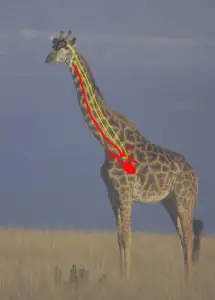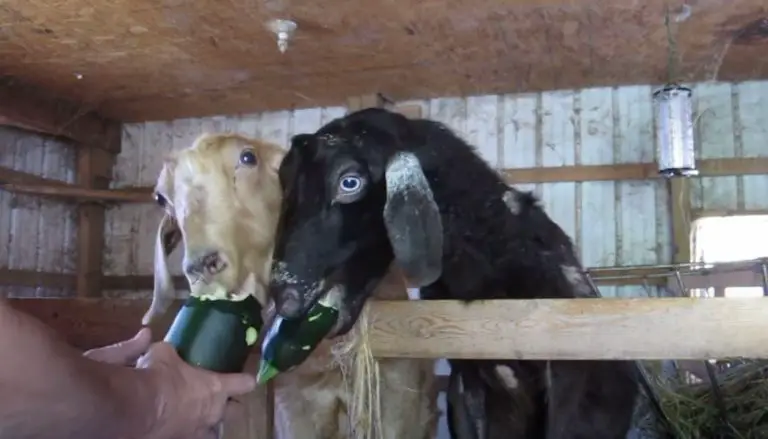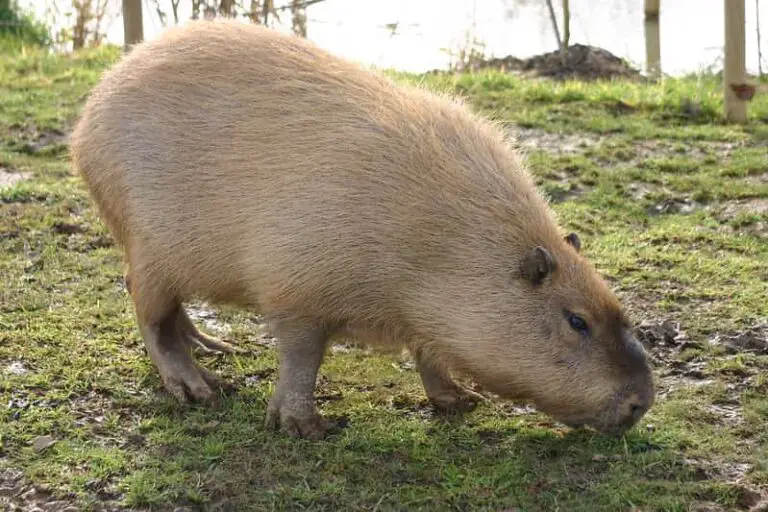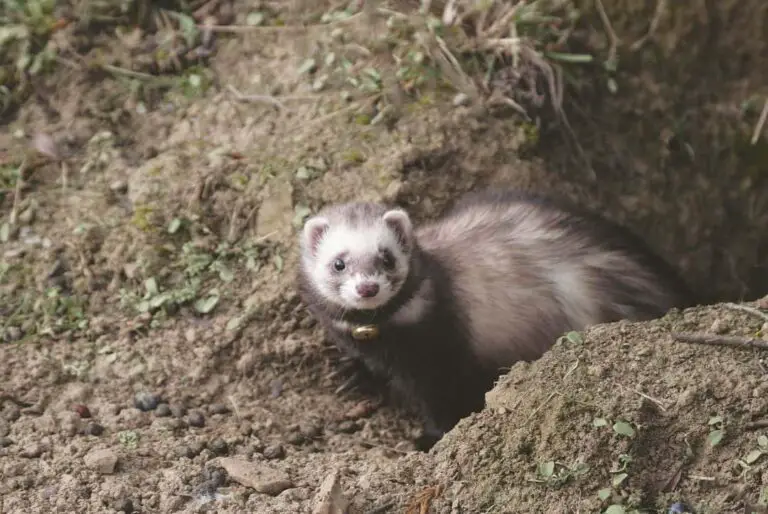Do Giraffes Have Gills? (Amazing Facts)
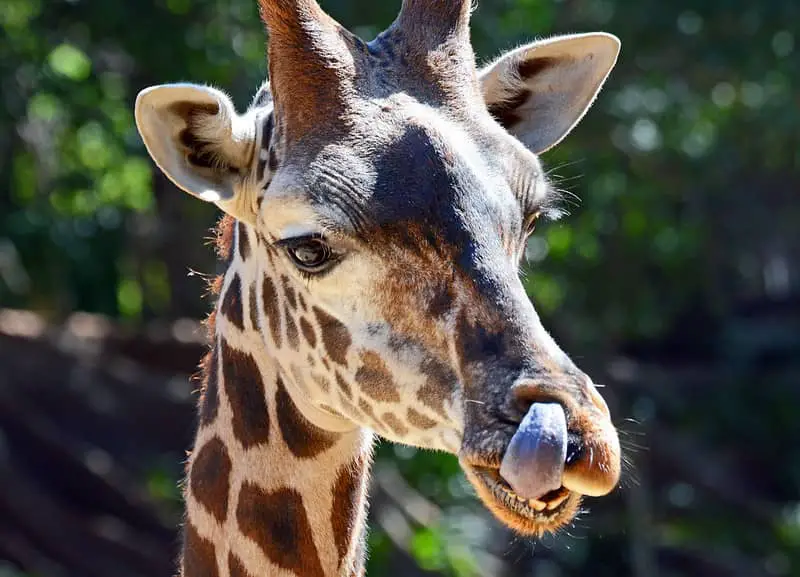
The giraffes are so amazing and striking, at first sight the most striking attributes of the giraffe are its long neck and its vibrant color with pints, but there are many other elements that cause curiosity and amazement in this animal.
Many questions arise about the giraffe and its long neck, especially about its breathing, how can the giraffe breathe with such a long neck?
So I’ve been constantly confronted with this question of whether giraffes have gills, after some research the answer is clear NO, but developing the subject a bit, I discovered that the giraffe might once have traces of gills in its respiratory system.
Also, I discovered interesting data about the breathing process of the giraffe.
Do giraffes have gills?
Like all mammals, Giraffes breathe through their lungs and not through gills, so O2 enters through their nostrils.
It continues through the Pharynx, Larynx, Trachea, Bronchus and reaches the Lungs where the Alveolar Sacs or Alveoli are located where the true Pulmonary breathing takes place through the Hematosis process, exchanging O2 with CO2 to exit this gas back through the nasal cavities.
Breathing is the process by which living beings obtain oxygen. This breathing can be pulmonary, gill, tracheal or cutaneous. Giraffes’ breathing is pulmonary.
Why don’t giraffes suffocate?
To understand the complexity of the breathing process of a giraffe, I will use a snorkel mask as an example.
If I use a snorkel too long while snorkeling, the risk is very high that I will always breathe my own air again and thus receive less and less oxygen.
The air column in the tube would be too high and the breathable air would not be exchanged. But a giraffe has a very long neck, so the lungs would have to ensure a very large gas exchange.
How do you solve that in nature? Why don’t giraffes choke on the air they breathe?
The giraffe’s lungs and heart system will work in combination to supply the giraffe with the necessary oxygen, although in a unique way. The giraffe’s lungs for example, is eight times the size of a human’s lung and its respiratory cycle is about one-third of that of a human.
It is necessary to breathe more slowly to interchange the large volume of air without producing windbrands in the giraffe’s 3.6-meter-long, wavy trachea. If the animal breathes again, the previously depleted breath of oxygen, it can’ t fully exhale.
This condition is made worse for the giraffe by the long trachea which holds more dead air than a single person can inhale at one time. Enough lung volume must be available so that this “bad air” is just a small part of the total volume. This is a physical problem that the giraffe solved.
The adaptation of the Giraffe’s nostrils
With such a high neck, giraffes are exposed to practically all kinds of airborne elements, by this I mean especially dust particles in the air, direct sunlight.
Due to the environment where the giraffe lives, such as the African savannah, where the incidence of the sun is tremendous and there is a lot of dust and sand both on the ground and in the air, the giraffe is adapted with two amazing physical characteristics to protect it from both inclemencies.
The first physical adaptation is its tongue, whose dark blue color allows it to eat from the tall bushes without suffering sunburn from long exposure, and the second adaptation is its nostrils.
Giraffes’ noses have nostrils that can be closed at will, this is so that they do not get dust when the winds blow hard.
Apart from this amazing feature of the giraffe’s nostrils, the giraffe has the ability to use its tongue to clean its nostrils of accumulated dust, thus keeping the air inlet holes completely clean.
This might seem a bit repulsive to us humans, but this adaptation of both the nostrils and the tongue is a wonder of nature.
Just imagine, giraffes don’t have fingers like humans do, in order to keep their nostrils clean and decongested they do it with their long and useful tongue, this is vital to make less complicated a process that in itself has its complications for giraffes like breathing.
I mean, imagine having a six-meter long neck, and your hands can’t reach your face, living in a deserted climate where a lot of dust accumulates in your nostrils, that would be a serious problem, wouldn’t it?
The nervous system and traces of giraffe gills
The nervous system connects the organs of our body, forwards stimuli and commands from the brain to the organs. The conduction speed in the nervous system is high (up to 100 m / s), but cannot be compared with the conduction speed of electrical lines in which voltage impulses propagate almost at the speed of light.
So it makes sense to keep connections between the brain and the corresponding target organs as short as possible. Usually, it is like that. The larynx nerve is an exception. Actually, the distance from the brain to the larynx is not that great.
However, the nerve coming from the brain does not pull directly to the larynx, but first further down, around the aortic arch above the heart and then back up towards the larynx.
The laryngeal nerve makes this loop in all mammals, even those with an elongated neck. In the giraffe, this leads to an extremely curious course of the nerve.
Instead of the required length of maybe 20-30 cm with a direct connection between the brain and larynx, the length of the nerve extends to several meters. The larynx sits under the giraffe’s head at a lofty height, while the aortic arch is in the trunk area.
How is this curious course of the larynx nerve to be explained? In this case, an engineer would be in dire need of an explanation. An evolutionary biologist, on the other hand, can refer to the tribal history of vertebrates. Our fish-like relatives had no larynx and no throat. However, they already had the forerunners of the larynx nerves, which had a completely different task with them.
They conducted nerve impulses from the head to the neighboring gill apparatus and back. In their course, they also moved around blood vessels. No problem with the short distances in this area.
When the gill apparatus was no longer needed in terrestrial vertebrates, some of its elements were retained, albeit in a completely different function. Some cartilaginous gill arch elements were transformed into components of our larynx.
Part of the gill nerves was also preserved. Instead of pulling to the gill apparatus, they now supplied the larynx area. But the terrestrial vertebrates have developed a neck and therefore a certain distance from the head to the torso. The gill arch vessels became aortic arches, pulmonary arteries and other vessels.
The branchial arch nerves, from which the larynx nerve developed, moved around the branchial arch vessels that became the aortic arch.
The nerve remained true to its old direction, except that there was now a large gap between the larynx and the aortic arch. Therefore, the larynx nerve still takes an unnecessarily long course today, even if it still fulfills its purpose.
The amazing cardiovascular system of the giraffe
The cardiovascular system is another special feature. The pumping pressure that is necessary to pump the brain into the brain is almost twice as high as in animals of similar size. The blood pressure in the brain is kept constant at 90 mmHg.
The blood pressure at heart level is around 215 mmHg, mmHg is the traditional unit of measurement for blood pressure (millimeters of mercury). Even if a giraffe lowers its head, for example, while drinking, the blood does not shoot uncontrollably to the head.
The blood vessels in the giraffe’s neck are equipped with vascular valves that regulate strong pressure. In addition, there is the so-called wound network below the brain, a network of branched arteries that absorbs the incoming blood like a sponge.

